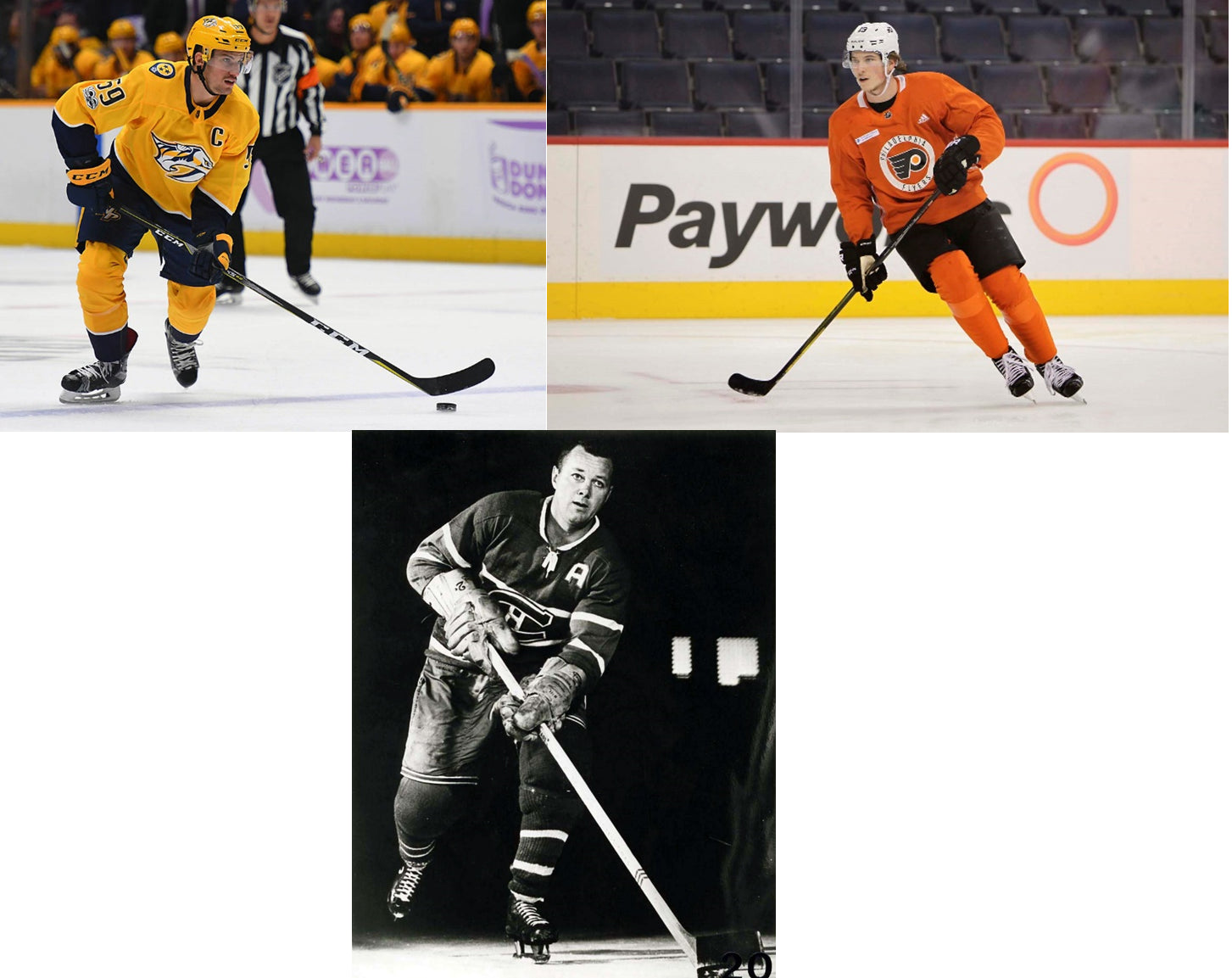Your Cart is Empty

Players are always looking to their equipment to give them an edge, tweaking and improving it themselves or seeking new technology from manufacturers. One of these tweaks, originating in the great choice NHL players have with their sticks, is a stick blade with the maximum height allowable under NHL rules along the entirety of the blade. This modification has produced strange-looking paddles which hearken back to the large wooden stick blades of yesteryear.
Advantages
Why would players abandon the usually sleek lines and graceful curvature of their usual pattern in favour of the large, awkward-looking max-height blade? It’s all about puck control, and an extra inch of height can make all the difference in the fast-paced game of hockey. Bouncing, rolling pucks have the unfortunate tendency to hop over a player’s blade. If this happens in a critical situation, such as a defenseman making an outlet pass in front of his net or a forward taking a shot on a breakaway, it can cost you the game. With extra height on the blade, the chance of a puck hopping over is reduced, and the player’s ability to handle, pass, and shoot rolling pucks is increased. With an increasing pace and less time than ever before to make decisions on the ice, the fraction of a second saved by not having to settle down a rolling puck can give you a competitive advantage. Moreover, a bigger blade facilitates one-timers with rolling or hopping pucks, allowing shooters to get good wood on imperfect passes. Finally, forwards who crash the crease looking for rebounds or deflections appreciate an extra bit of blade to help get more touches on the puck.

BASE Hockey’s max height offerings
BASE Hockey has been on board with this trend for a while now, and we plan to keep bringing you more of your favourite patterns in max height format. Our BC10 Russell is Kris Russell’s pro pattern, which is a BC01 Hossa with added height. This pattern is very popular among toe curve users and even more popular than the original BC01, since the Hossa’s short blade can be tricky to use in bad ice conditions for anyone but the slickest stickhandlers. Furthermore, BASE’s all-new BIGGIE stick follows this same principle by giving Junior-sized players a bigger blade with more surface area, along with other important benefits.

Disadvantages
Are there drawbacks to max height blades? If anything, it’s a question of feel and personal preference. Adding more material to the blade does increase its weight and make the stick slightly more blade-heavy, but a few grams are unlikely to be perceptible with the ultra-light construction of BASE blades. After all, differences between players in taping or waxing alone probably account for a bigger weight and balance shift than added material on the blade. The path of the puck on the blade when shooting or passing is also unaffected, as adding material close to the shaft does not change the puck’s usual contact surface, unlike making a blade shorter. The most obvious disadvantage is probably only aesthetic: Some players won’t want to switch to a wacky-looking oversized blade.
Would you like to see a max-height version of your favourite BASE pattern? Let us know in the comments below! You can also try the BC01 Hossa and BC10 Russell at a BASE Hockey fitting centre near you to see what difference a max height blade can make for your game.
Comments will be approved before showing up.
Jonathan Long
July 08, 2019
Do you offer a max height “P92” blade? I see BC92, BM19, and Bl19, but didn’t see bl19 listed on the blade chart.